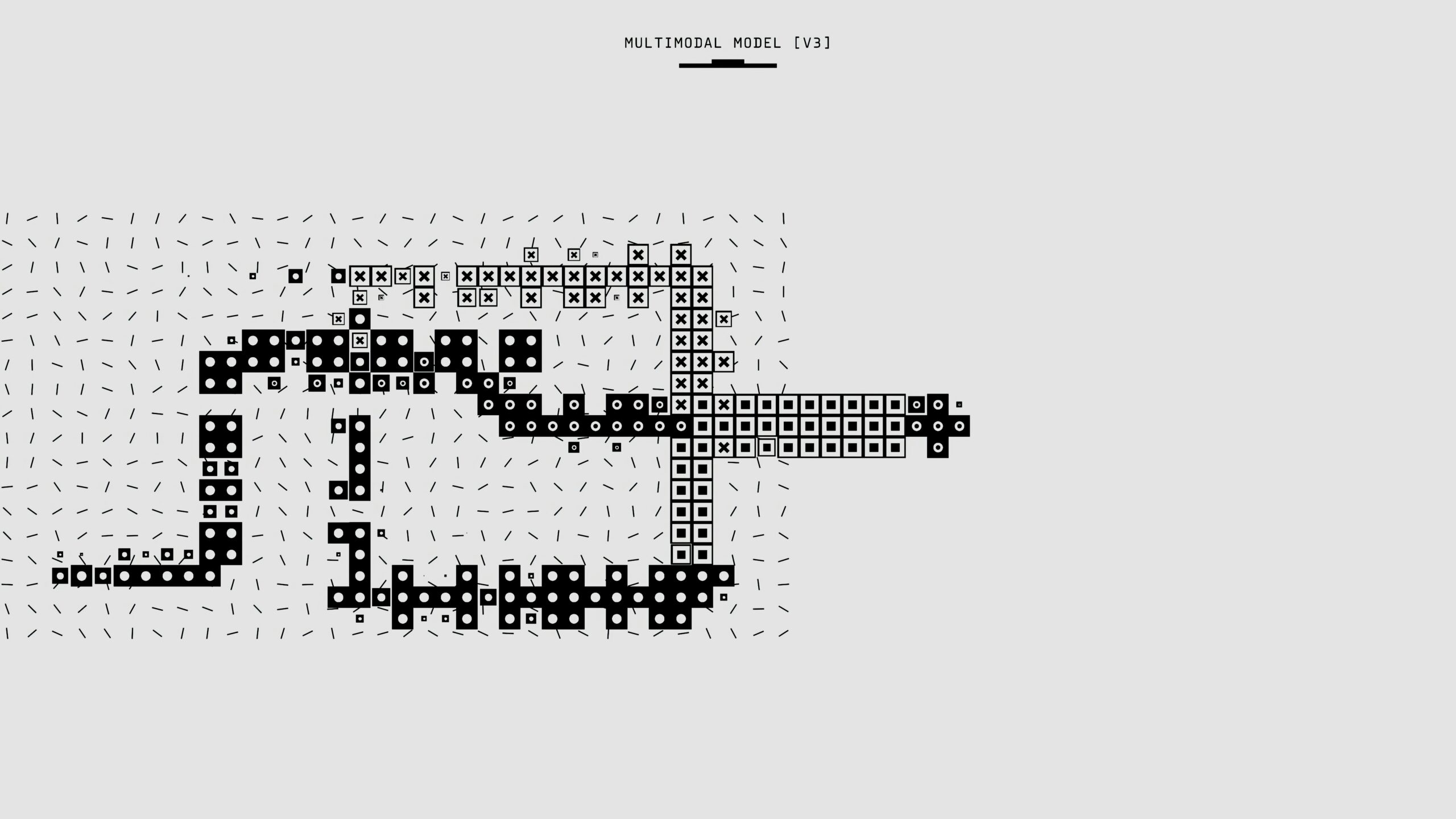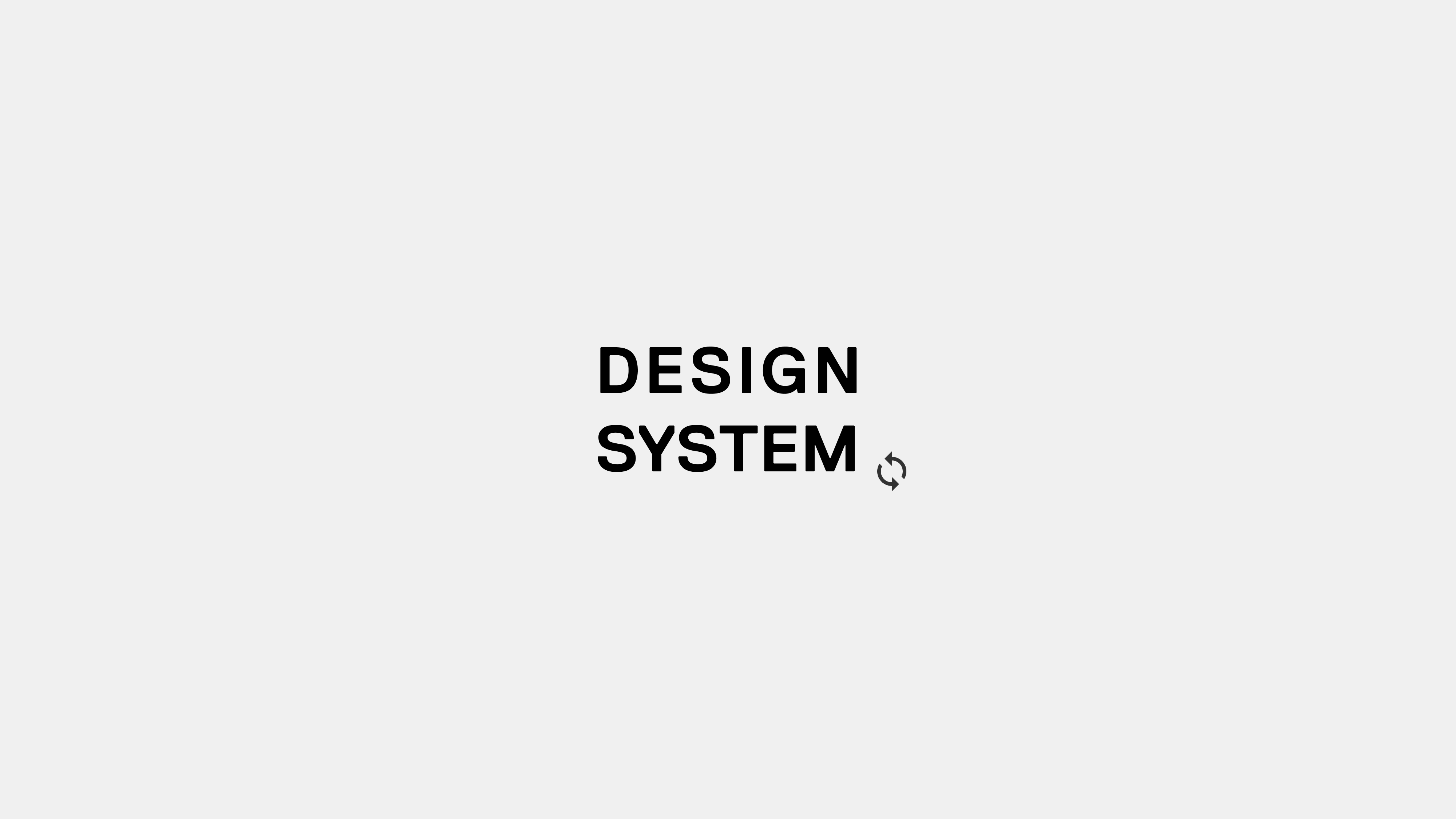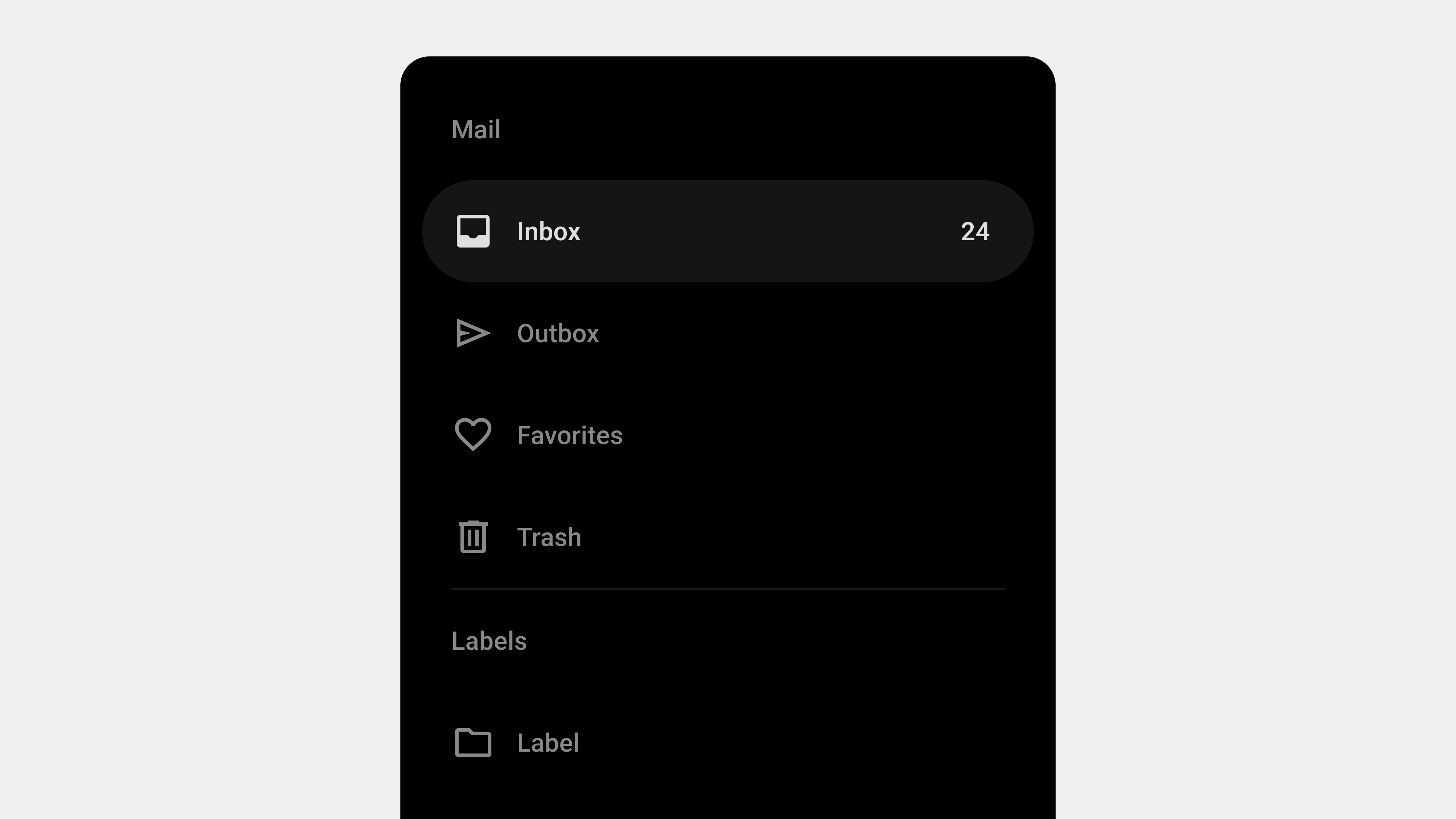안녕하세요, 정보처리기사 자격증을 향해 나아가는 개발자 여러분! 그리고 고품질 디지털 서비스를 만드는 데 열정을 가진 모든 분들. 우리가 앞서 다루었던 플랫폼 비즈니스 모델(TSP, MSP)과 그 성장 엔진인 네트워크 효과는 결국 ‘성능’이라는 단단한 기술적 기반 위에서만 빛을 발할 수 있습니다. 사용자가 몰려들수록 느려지거나 멈춰버리는 플랫폼은 아무리 좋은 아이디어라도 외면받기 마련입니다. 따라서 플랫폼의 성능 특성을 정확히 분석하고 지속적으로 관리 및 최적화하는 것은 현대 개발자의 핵심 역량 중 하나입니다. 특히 사용자의 경험을 직접 측정하고 개선해야 하는 제품 소유자(PO)나 데이터 분석가, 사용자 연구원과 협업하는 개발자에게 성능에 대한 깊이 있는 이해는 필수적입니다. 이 글에서는 플랫폼 성능의 정의부터 핵심 지표, 분석 방법론, 병목 현상 해결 및 최적화 전략까지, 정보처리기사 시험 대비와 실무 역량 강화를 위한 모든 것을 상세히 다룹니다.
플랫폼 성능이란 무엇이며 왜 중요한가? 본질 파헤치기
플랫폼 성능(Platform Performance)이란 단순히 ‘빠르다’는 속도의 개념을 넘어, 사용자가 플랫폼을 이용할 때 경험하는 전반적인 품질과 시스템의 안정성 및 효율성을 포괄하는 다면적인 개념입니다. 사용자의 요청에 얼마나 신속하게 응답하는지, 동시에 얼마나 많은 사용자와 요청을 처리할 수 있는지, 제한된 자원을 얼마나 효율적으로 사용하는지, 예기치 못한 상황에서도 얼마나 안정적으로 서비스를 유지하는지 등이 모두 성능의 중요한 요소입니다.
성능의 다면적 정의: 속도를 넘어서
플랫폼 성능을 구성하는 주요 요소들은 다음과 같습니다.
- 응답성 (Responsiveness): 사용자의 요청(클릭, 검색, 주문 등)에 대해 시스템이 얼마나 빨리 반응하는가? (주요 지표: 응답 시간)
- 처리 능력 (Capacity): 시스템이 주어진 시간 동안 얼마나 많은 작업(트랜잭션, 요청)을 처리할 수 있는가? (주요 지표: 처리량)
- 안정성 (Stability): 예기치 못한 부하나 오류 발생 시에도 시스템이 얼마나 꾸준히 정상적으로 작동하는가? (주요 지표: 에러율, 가용성)
- 확장성 (Scalability): 사용자나 데이터가 증가함에 따라 시스템의 성능을 유지하거나 향상시키기 위해 자원을 얼마나 유연하게 추가하거나 조정할 수 있는가?
- 효율성 (Efficiency): 주어진 성능 목표를 달성하기 위해 CPU, 메모리, 네트워크 등의 자원을 얼마나 효율적으로 사용하는가? (주요 지표: 자원 사용률)
이 모든 요소들이 조화롭게 작동할 때 비로소 사용자는 ‘성능 좋은’ 플랫폼이라고 느끼게 됩니다.
성능 분석의 중요성: 왜 끊임없이 측정하고 개선해야 하는가?
플랫폼 성능 분석과 최적화는 단순한 기술적 과제를 넘어 비즈니스 성공과 직결되는 핵심 활동입니다.
- 사용자 경험(UX) 향상: 느린 응답 시간과 잦은 오류는 사용자의 불만과 이탈을 초래하는 가장 큰 원인 중 하나입니다. 빠르고 안정적인 성능은 사용자 만족도와 충성도를 높이는 기본입니다. PO나 UX 연구원은 성능 지표를 사용자 만족도의 대리 지표로 활용하기도 합니다.
- 비즈니스 성과 증대: 이커머스 플랫폼에서는 페이지 로딩 속도가 1초만 느려져도 전환율과 매출이 크게 감소한다는 연구 결과가 많습니다. 성능은 직접적인 비즈니스 지표에 영향을 미칩니다.
- 확장성 확보 및 비용 절감: 네트워크 효과 등으로 사용자가 급증할 때 성능 저하 없이 서비스를 유지하려면 확장 가능한 시스템 설계와 꾸준한 성능 관리가 필수적입니다. 또한, 자원 사용률을 최적화하면 불필요한 인프라 비용을 절감할 수 있습니다. 데이터 분석가는 용량 계획(Capacity Planning)을 위해 성능 및 자원 사용률 데이터를 활용합니다.
- 시스템 안정성 및 신뢰도 확보: 성능 문제는 종종 시스템 전체의 불안정성으로 이어질 수 있습니다. 꾸준한 성능 분석과 테스트를 통해 잠재적인 문제를 미리 발견하고 해결함으로써 서비스의 신뢰도를 높일 수 있습니다.
- 경쟁 우위 확보: 유사한 기능을 제공하는 경쟁 플랫폼들 사이에서 뛰어난 성능은 사용자를 유치하고 유지하는 중요한 차별화 요소가 될 수 있습니다.
따라서 성능은 ‘있으면 좋은 것’이 아니라, 플랫폼의 생존과 성장을 위한 ‘필수 조건’이며, 개발 초기부터 운영 단계까지 지속적으로 관리되어야 할 핵심 품질 속성입니다.
플랫폼 성능의 바로미터: 핵심 성능 특성 지표 이해하기
플랫폼의 성능을 객관적으로 평가하고 관리하기 위해서는 정량적인 지표를 사용해야 합니다. 다양한 성능 지표들이 있지만, 정보처리기사 시험 및 실무에서 가장 중요하게 다루어지는 핵심 지표들을 중심으로 살펴보겠습니다.
응답 시간 (Response Time)
응답 시간은 사용자가 시스템에 요청을 보낸 시점부터 시스템이 해당 요청에 대한 최종 응답을 반환할 때까지 걸리는 총 시간을 의미합니다. 사용자 경험과 가장 직접적으로 관련된 지표 중 하나입니다.
- 측정 단위: 밀리초(ms), 초(s)
- 주요 통계:
- 평균 응답 시간 (Average Response Time): 전체 요청의 응답 시간을 평균 낸 값. 전체적인 추세를 파악하는 데 유용하지만, 일부 느린 응답에 의해 왜곡될 수 있습니다.
- 백분위수 응답 시간 (Percentile Response Time): 응답 시간 분포에서 특정 백분위수에 해당하는 값. 예를 들어, 95th percentile 응답 시간이 500ms라는 것은 전체 요청의 95%가 500ms 이내에 처리되었음을 의미합니다. 평균보다 실제 사용자 경험을 더 잘 반영하며, 특히 99th, 99.9th percentile은 최악의 경우(worst-case) 성능을 파악하는 데 중요합니다. (SLO/SLA 설정에 자주 사용됨)
- 중요성: 사용자는 일반적으로 수백 ms 이내의 빠른 응답을 기대합니다. 응답 시간이 길어지면 사용자는 지루함이나 답답함을 느끼고 서비스를 이탈할 가능성이 커집니다.
처리량 (Throughput)
처리량은 시스템이 단위 시간당 처리할 수 있는 요청 또는 트랜잭션의 수를 나타냅니다. 시스템의 처리 용량을 나타내는 핵심 지표입니다.
- 측정 단위: TPS (Transactions Per Second), RPS (Requests Per Second), 시간당 처리 건수 등
- 중요성: 처리량은 시스템이 동시에 얼마나 많은 작업을 감당할 수 있는지를 보여줍니다. 목표 처리량을 설정하고 이를 만족하는지 테스트하는 것은 서비스의 용량 산정 및 확장 계획 수립에 필수적입니다. 예를 들어, 특정 이벤트 기간 동안 평소보다 훨씬 높은 트래픽이 예상될 때, 시스템이 목표 TPS를 감당할 수 있는지 미리 검증해야 합니다.
동시 사용자 수 및 자원 사용률
- 동시 사용자 수 (Concurrency / Concurrent Users): 특정 시점에 시스템에 접속하여 활성 상태로 상호작용하는 사용자의 수입니다. 시스템이 동시에 얼마나 많은 사용자를 지원할 수 있는지 나타냅니다.
- 자원 사용률 (Resource Utilization): 시스템이 작업을 처리하는 동안 사용하는 하드웨어 자원(CPU, 메모리, 디스크 I/O, 네트워크 대역폭)의 비율입니다.
- 측정 단위: 백분율(%)
- 중요성: 자원 사용률 모니터링은 시스템의 병목 지점을 파악하고 용량 계획(Capacity Planning)을 수립하는 데 중요합니다. 특정 자원의 사용률이 지속적으로 100%에 가깝다면 해당 자원이 병목일 가능성이 높으며, 증설이나 최적화가 필요합니다. 반대로 사용률이 너무 낮다면 자원이 낭비되고 있을 수 있습니다. 효율적인 자원 활용은 클라우드 환경 등에서 비용 절감과 직결됩니다.
에러율 (Error Rate)
에러율은 전체 요청 중에서 시스템 오류(서버 오류, 네트워크 오류 등)로 인해 실패한 요청의 비율을 나타냅니다. 시스템의 안정성을 평가하는 중요한 지표입니다.
- 측정 단위: 백분율(%)
- 중요성: 높은 에러율은 시스템에 심각한 문제가 있음을 의미하며, 사용자 경험에 치명적인 영향을 미칩니다. 에러율을 지속적으로 모니터링하고 특정 임계치 이상으로 증가할 경우 즉시 원인을 파악하고 해결해야 합니다. (예: HTTP 5xx 에러 비율)
가용성 (Availability)
가용성은 시스템이 장애 없이 정상적으로 서비스를 제공하는 시간의 비율을 의미합니다. 시스템의 신뢰성을 나타내는 대표적인 지표입니다.
- 측정 단위: 백분율(%), 흔히 ‘나인(Nine)’ 개수로 표현 (예: 99.9% – “쓰리 나인”, 99.99% – “포 나인”)
- 계산: (전체 운영 시간 – 다운타임) / 전체 운영 시간 * 100
- 중요성: 높은 가용성은 사용자와 비즈니스의 신뢰를 얻는 데 필수적입니다. 서비스 수준 협약(SLA, Service Level Agreement)에서 핵심적인 지표로 사용되며, 목표 가용성을 달성하기 위해 시스템 이중화, 장애 복구 메커니즘 등 다양한 기술적 노력이 필요합니다.
확장성 (Scalability)
확장성은 시스템의 부하(사용자 수, 데이터 양, 요청 수 등)가 증가했을 때, 성능 저하 없이 이를 처리할 수 있도록 시스템 용량을 늘릴 수 있는 능력을 의미합니다.
- 종류:
- 수직 확장 (Scale-up): 기존 서버의 사양(CPU, 메모리 등)을 높여 성능을 향상시키는 방식.
- 수평 확장 (Scale-out): 서버 인스턴스의 수를 늘려 부하를 분산시키는 방식. 클라우드 환경에서 일반적으로 선호됨.
- 중요성: 네트워크 효과가 강한 플랫폼이나 빠르게 성장하는 서비스에게 확장성은 생존과 직결됩니다. 확장성 없는 시스템은 성공적인 성장을 감당할 수 없습니다. 아키텍처 설계 단계부터 확장성을 고려하는 것이 매우 중요합니다.
이러한 핵심 지표들을 꾸준히 측정하고 분석함으로써 플랫폼의 현재 상태를 진단하고, 잠재적인 문제를 예측하며, 개선 방향을 설정할 수 있습니다.
성능 미스터리 풀기: 성능 분석 방법론과 도구들
플랫폼의 성능 특성을 파악하고 잠재적인 문제를 진단하기 위해서는 체계적인 분석 방법론과 적절한 도구의 활용이 필수적입니다. 성능 분석은 개발 초기부터 테스트, 운영 단계에 이르기까지 지속적으로 이루어져야 합니다.
성능 테스트: 시스템의 한계와 능력을 시험하다
성능 테스트는 특정 부하 조건에서 시스템의 성능 지표(응답 시간, 처리량, 자원 사용률 등)를 측정하고, 목표 성능 요구사항을 만족하는지 검증하는 과정입니다. 다양한 목적에 따라 여러 종류의 성능 테스트가 수행됩니다.
- 부하 테스트 (Load Testing): 예상되는 정상적인 수준의 사용자 부하(평균 부하, 최대 예상 부하)를 시스템에 가하여 응답 시간, 처리량, 자원 사용률 등을 측정하고 성능 목표 달성 여부를 확인합니다. 시스템이 평상시 트래픽을 문제없이 처리할 수 있는지 검증하는 것이 주 목적입니다.
- 스트레스 테스트 (Stress Testing): 시스템이 감당할 수 있는 한계점(임계 처리량, 최대 동시 사용자 수)을 찾기 위해 예상 부하를 훨씬 초과하는 과도한 부하를 가하는 테스트입니다. 시스템의 병목 지점을 식별하고, 장애 발생 시 시스템이 어떻게 반응하는지(Graceful Degradation 여부) 확인하는 데 목적이 있습니다.
- 스파이크 테스트 (Spike Testing): 갑작스럽게 사용자가 폭증하는 상황(예: 티켓 오픈, 특별 할인 이벤트)을 시뮬레이션하여, 시스템이 급격한 부하 변화에 얼마나 잘 대응하고 빠르게 안정화되는지를 테스트합니다.
- 내구성 테스트 (Soak / Endurance Testing): 비교적 장시간(수 시간 ~ 수일) 동안 예상되는 부하를 꾸준히 가하여 시스템의 안정성을 확인하는 테스트입니다. 시간이 지남에 따라 발생할 수 있는 문제(예: 메모리 누수, 리소스 고갈, 성능 저하)를 발견하는 데 목적이 있습니다.
이러한 성능 테스트를 수행하기 위해 JMeter, nGrinder, K6, Locust 등 다양한 오픈소스 및 상용 도구들이 사용됩니다.
코드 레벨 분석: 병목의 근원을 찾아서, 프로파일링
프로파일링(Profiling)은 애플리케이션 코드가 실행될 때 각 함수나 메서드의 실행 시간, 호출 횟수, 메모리 사용량 등을 측정하여 성능 병목의 원인이 되는 특정 코드 구간을 찾아내는 기술입니다.
- 종류:
- CPU 프로파일러: 어떤 코드가 CPU 시간을 많이 소비하는지 분석합니다. 비효율적인 알고리즘이나 불필요한 반복 연산 등을 찾는 데 사용됩니다.
- 메모리 프로파일러: 메모리 할당 및 해제 패턴을 분석하여 메모리 누수(Memory Leak)나 과도한 메모리 사용의 원인을 찾습니다.
- 활용: 성능 테스트 결과 특정 기능의 응답 시간이 느리거나 자원 사용률이 높게 나타날 때, 프로파일링 도구(예: VisualVM, Py-Spy, YourKit)를 사용하여 문제의 원인이 되는 코드 로직을 정확히 식별하고 최적화할 수 있습니다.
실시간 감시: 운영 환경에서의 성능 추적, 모니터링
모니터링(Monitoring)은 실제 운영 환경에서 시스템의 성능 지표와 상태를 실시간으로 수집하고 시각화하여 관찰하는 활동입니다. 문제가 발생했을 때 신속하게 인지하고 대응할 수 있도록 하며, 장기적인 성능 추이 분석 및 용량 계획에도 활용됩니다.
- 핵심: 주요 성능 지표(응답 시간, 처리량, 에러율, 자원 사용률 등)를 지속적으로 추적하고, 이상 징후(예: 갑작스러운 응답 시간 증가, 에러율 급증) 발생 시 알림(Alerting)을 받도록 설정하는 것이 중요합니다.
- APM (Application Performance Management/Monitoring): 트랜잭션 추적, 코드 레벨 성능 가시성, 인프라 모니터링, 사용자 경험 모니터링 등 애플리케이션 성능 관리에 필요한 다양한 기능을 통합적으로 제공하는 솔루션입니다. Datadog, New Relic, Dynatrace 등이 대표적인 상용 APM 도구이며, Scouter, Pinpoint 등 국산 오픈소스 APM도 있습니다.
- 시스템/인프라 모니터링: 서버의 CPU/메모리/디스크/네트워크 사용량, 데이터베이스 상태, 메시지 큐 길이 등 인프라 수준의 지표를 모니터링합니다. Prometheus + Grafana 조합이 오픈소스 영역에서 널리 사용됩니다.
성능 테스트, 프로파일링, 모니터링은 상호 보완적으로 사용되어야 합니다. 테스트를 통해 잠재적 문제를 발견하고, 프로파일링으로 원인을 분석하며, 모니터링으로 실제 운영 환경에서의 성능을 지속적으로 관리하는 선순환 구조를 만드는 것이 이상적입니다.
병목 지점 식별 및 성능 최적화 전략: 더 빠르고 안정적으로
플랫폼 성능 분석의 궁극적인 목표는 성능 저하의 원인이 되는 병목 지점(Bottleneck)을 찾아내고 이를 해결하여 성능을 개선하는 것입니다. 성능 최적화는 한 번에 끝나는 작업이 아니라, 지속적인 측정과 개선을 반복하는 과정입니다.
흔한 성능 병목 지점들
성능 병목은 시스템의 다양한 영역에서 발생할 수 있습니다.
- CPU: 복잡한 연산, 비효율적인 알고리즘, 과도한 컨텍스트 스위칭 등으로 인해 CPU 사용률이 한계에 도달하는 경우.
- 메모리: 메모리 누수, 과도한 객체 생성, 부족한 메모리 용량으로 인해 가비지 컬렉션(GC) 오버헤드가 증가하거나 OutOfMemoryError가 발생하는 경우.
- 디스크 I/O: 느린 디스크 접근 속도, 비효율적인 파일 읽기/쓰기, 과도한 로깅 등으로 인해 디스크 작업 대기 시간이 길어지는 경우.
- 네트워크: 낮은 대역폭, 높은 지연 시간(Latency), 비효율적인 데이터 전송 방식으로 인해 네트워크 통신이 느려지는 경우.
- 데이터베이스: 비효율적인 쿼리(슬로우 쿼리), 인덱스 부족 또는 잘못된 사용, 과도한 DB 연결 요청, 잠금(Lock) 경합 등으로 인해 데이터베이스 응답이 느려지는 경우.
- 애플리케이션 코드: 동기 방식의 블로킹(Blocking) 호출 남용, 비효율적인 자료구조 사용, 불필요한 객체 생성, 스레드 경합 등 코드 자체의 문제.
- 외부 시스템 의존성: 호출하는 외부 API나 서비스의 응답 지연 또는 오류가 전체 시스템 성능에 영향을 미치는 경우.
병목 분석을 위한 체계적인 접근법
성능 병목을 효과적으로 찾아내기 위해서는 감이나 추측이 아닌, 데이터에 기반한 체계적인 접근이 필요합니다.
- 측정 (Measure): 먼저 모니터링 도구나 성능 테스트를 통해 현재 시스템의 성능 지표(응답 시간, 처리량, 자원 사용률 등)를 정확히 측정하고 기준선(Baseline)을 설정합니다.
- 식별 (Identify): 측정된 데이터를 분석하여 어떤 지표가 목표치를 만족하지 못하는지, 어떤 자원의 사용률이 비정상적으로 높은지 등 문제 영역을 식별합니다. APM 도구의 트랜잭션 추적 기능이 특정 구간의 지연 시간을 파악하는 데 유용합니다.
- 가설 수립 (Hypothesize): 식별된 문제 영역을 바탕으로 성능 저하의 구체적인 원인(병목 지점)에 대한 가설을 세웁니다. (예: “특정 DB 쿼리가 느려서 전체 응답 시간이 길어지고 있다”, “메모리 누수로 인해 GC 시간이 길어지고 있다”)
- 테스트 및 검증 (Test & Verify): 가설을 검증하기 위해 추가적인 분석(프로파일링, 쿼리 실행 계획 분석 등)을 수행하거나, 특정 조건 하에서 성능 테스트를 재실행합니다.
- 최적화 (Optimize): 검증된 병목 지점을 해결하기 위한 최적화 작업을 수행합니다.
- 재검증 (Verify Again): 최적화 작업 후 다시 성능을 측정하여 개선 효과가 있었는지, 다른 부작용은 없는지 확인합니다.
이 과정을 반복하며 점진적으로 성능을 개선해 나갑니다.
주요 성능 최적화 기법들
병목 지점의 유형에 따라 다양한 최적화 기법을 적용할 수 있습니다.
- 코드 최적화:
- 더 효율적인 알고리즘이나 자료구조 사용.
- 불필요한 반복문이나 객체 생성 줄이기.
- 동기 방식 대신 비동기 방식(Asynchronous Programming) 활용하여 I/O 작업 등에서 발생하는 블로킹 최소화.
- 코드 프로파일링을 통해 찾아낸 핫스팟(Hotspot) 코드 집중 개선.
- 데이터베이스 최적화:
- 느린 쿼리(Slow Query) 튜닝 (실행 계획 분석, 쿼리 재작성).
- 적절한 인덱스(Index) 생성 및 관리.
- 데이터베이스 연결 풀(Connection Pool) 사용 및 튜닝.
- 정규화(Normalization)와 비정규화(Denormalization)의 적절한 활용.
- 필요시 데이터베이스 서버 사양 업그레이드 또는 샤딩(Sharding)/리플리케이션(Replication) 고려.
- 캐싱 (Caching) 활용:
- 자주 접근하지만 잘 변하지 않는 데이터를 메모리(예: Redis, Memcached)나 로컬 저장소에 캐싱하여 DB나 외부 시스템 접근 최소화.
- 웹 페이지 콘텐츠나 정적 파일(이미지, CSS, JS)을 CDN(Content Delivery Network)에 캐싱하여 사용자에게 빠르게 전달하고 원본 서버 부하 감소.
- 비동기 처리 (Asynchronous Processing):
- 시간이 오래 걸리거나 즉각적인 응답이 필요하지 않은 작업(예: 이메일 발송, 배치 처리, 데이터 집계)을 메시지 큐(Message Queue, 예: Kafka, RabbitMQ)를 이용하여 백그라운드에서 비동기적으로 처리.
- 인프라 튜닝 및 확장:
- 운영체제 커널 파라미터, 웹 서버 설정, JVM 옵션 등 인프라 레벨 튜닝.
- 로드 밸런서(Load Balancer)를 이용한 트래픽 분산.
- 오토 스케일링(Auto-scaling) 설정으로 부하에 따라 자동으로 서버 인스턴스 수 조절.
- 필요에 따라 서버 사양 업그레이드(Scale-up) 또는 서버 증설(Scale-out).
어떤 최적화 기법을 적용할지는 병목의 원인과 시스템의 특성, 비용 대비 효과 등을 종합적으로 고려하여 결정해야 합니다.
플랫폼 특성과 개발자의 역할: 성능을 내재화하라
플랫폼의 성능 목표와 분석/최적화 방식은 해당 플랫폼의 유형과 비즈니스 특성에 따라 달라질 수 있습니다. 그리고 이 모든 과정에서 개발자의 역할은 매우 중요합니다.
플랫폼 유형별 성능 고려사항
- 전자상거래 플랫폼: 빠른 페이지 로딩 속도, 안정적인 결제 처리(낮은 에러율, 높은 처리량), 개인화 추천의 응답 시간이 중요합니다. 특히 구매자와 판매자 양쪽 모두에게 원활한 경험을 제공해야 하는 TSP 특성을 고려해야 합니다.
- 소셜 미디어 플랫폼: 대규모 사용자의 동시 접속 처리 능력, 빠른 뉴스피드 로딩 속도, 실시간 알림 처리, 콘텐츠(이미지/동영상) 업로드 및 전송 속도가 중요합니다.
- 콘텐츠 스트리밍 플랫폼 (동영상/음악): 높은 데이터 처리량, 낮은 지연 시간(Latency), 끊김 없는 재생(버퍼링 최소화), 다양한 디바이스 지원이 중요합니다.
- 실시간 통신 플랫폼 (메신저/화상회의): 매우 낮은 지연 시간, 안정적인 연결 유지, 높은 동시 접속 처리 능력이 필수적입니다.
- B2B SaaS 플랫폼: 특정 기능의 처리 속도보다는 데이터 처리의 정확성, 시스템 안정성 및 가용성, 보안이 더 중요할 수 있습니다.
이처럼 플랫폼의 주요 기능과 사용자 그룹(TSP/MSP의 각 ‘Side’)의 기대치를 고려하여 성능 목표의 우선순위를 설정하고, 해당 목표에 맞는 지표를 집중적으로 관리해야 합니다.
성능 중심 문화와 개발자의 책임
성능은 특정 담당자만의 책임이 아니라, 개발팀 전체, 나아가 조직 전체가 관심을 가져야 할 문제입니다. 특히 개발자는 플랫폼 성능에 직접적인 영향을 미치는 코드를 작성하고 시스템을 설계하는 주체로서 다음과 같은 책임과 자세를 가져야 합니다.
- 성능을 고려한 코드 작성: 개발 초기 단계부터 성능을 염두에 두고 효율적인 알고리즘과 자료구조를 선택하며, 불필요한 자원 낭비를 줄이는 코드를 작성하려는 노력이 필요합니다. ‘나중에 최적화하면 된다’는 생각은 종종 더 큰 비용을 초래합니다.
- 성능 테스트 참여: 단위 테스트뿐만 아니라 통합 테스트, 성능 테스트 단계에도 적극적으로 참여하여 자신의 코드가 전체 시스템 성능에 미치는 영향을 확인하고 개선해야 합니다. 성능 테스트 스크립트 작성이나 결과 분석에 기여할 수 있습니다.
- 모니터링 데이터 이해 및 활용: 운영 환경의 성능 모니터링 데이터를 주기적으로 확인하고, 이상 징후 발생 시 원인을 파악하는 데 능동적으로 참여해야 합니다. APM 등의 도구를 활용하여 문제의 근본 원인을 추적하는 능력이 중요합니다. 이는 성능 저하로 인한 사용자 불만이나 비즈니스 지표 하락을 보고하는 PO/데이터 분석가와 효과적으로 소통하는 데 도움이 됩니다.
- 지속적인 학습과 개선: 성능 최적화 기술과 도구는 계속해서 발전합니다. 새로운 기술 트렌드를 학습하고, 코드 리뷰 등을 통해 동료들과 지식을 공유하며 함께 성능 개선 문화를 만들어나가야 합니다.
- CI/CD 파이프라인에 성능 테스트 통합: 코드 변경 사항이 배포되기 전에 자동으로 성능 테스트를 수행하여 성능 저하(Regression)를 조기에 발견하고 방지하는 프로세스를 구축하는 데 기여할 수 있습니다.
성능은 단순한 기술적 지표가 아니라, 사용자와 비즈니스의 성공을 위한 필수적인 ‘품질 속성’이자 ‘기능(Feature)’입니다.
결론: 성능, 끊임없는 여정의 시작
지금까지 우리는 플랫폼 성능의 정의와 중요성, 핵심 지표, 분석 방법론, 병목 식별 및 최적화 전략, 그리고 개발자의 역할에 이르기까지 광범위한 내용을 살펴보았습니다. 플랫폼 성능 관리는 한 번의 노력으로 끝나는 것이 아니라, 플랫폼이 살아 숨 쉬는 동안 지속되어야 하는 끊임없는 여정입니다.
정보처리기사 시험을 준비하는 과정에서 이러한 성능 관련 지식을 습득하는 것은 합격을 위한 중요한 단계일 뿐만 아니라, 여러분이 앞으로 현업에서 뛰어난 개발자로 성장하는 데 든든한 밑거름이 될 것입니다. 사용자의 기대를 뛰어넘는 빠르고 안정적인 플랫폼을 만들기 위해서는 기술적 깊이와 더불어, 데이터를 기반으로 문제를 해결하려는 분석적 사고, 그리고 동료들과 협력하여 개선을 이끌어내는 자세가 필요합니다.
성능을 단순한 부가 기능이 아닌, 플랫폼의 핵심 가치로 인식하고 개발 초기부터 꾸준히 관심을 기울이십시오. 그것이 바로 사용자의 사랑을 받고 비즈니스적으로 성공하는 플랫폼을 만드는 비결입니다.
#플랫폼성능 #성능분석 #성능테스트 #성능측정 #부하테스트 #스트레스테스트 #성능지표 #응답시간 #처리량 #가용성 #확장성 #병목현상 #Bottleneck #성능최적화 #모니터링 #APM #프로파일링 #정보처리기사 #개발자 #Scalability #Throughput #ResponseTime



